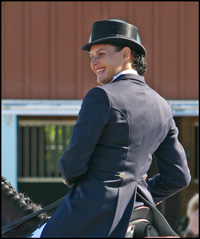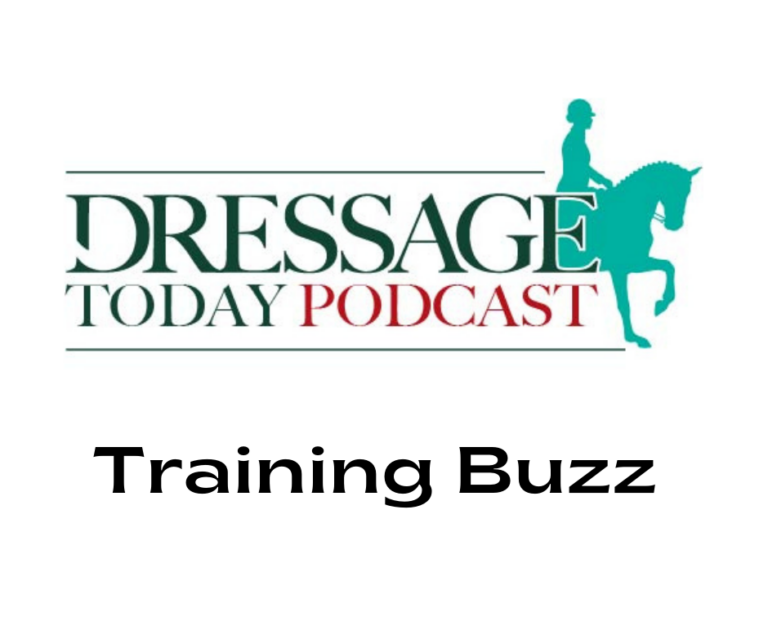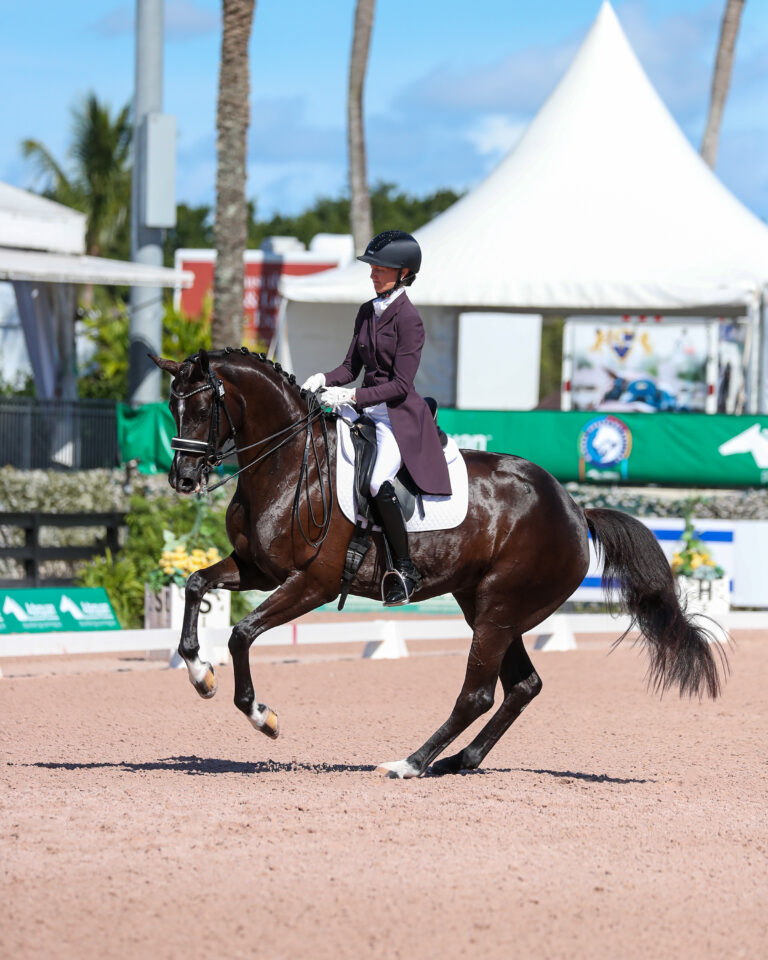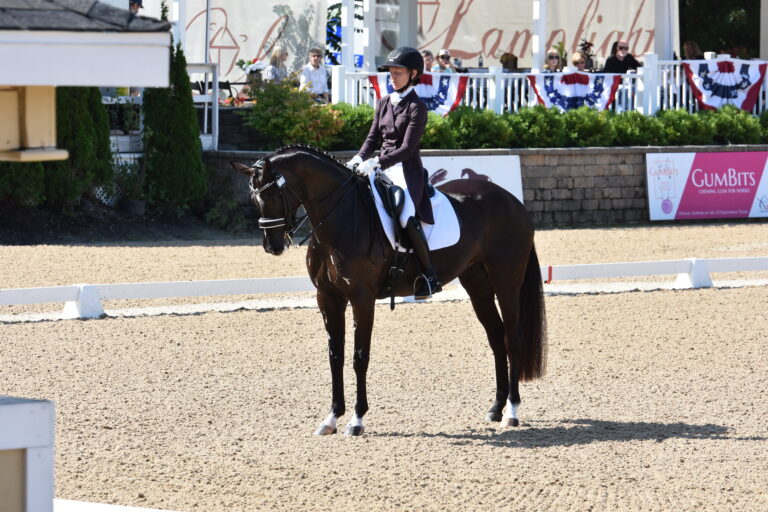Q: I often hear the expression “riding a horse from back-to-front” but it’s not quite clear to me what it means since many dressage riders seem to have a pretty strong rein contact, which to me suggests that the horse is ridden from front-to-back. How exactly do you ride a horse from back-to-front? How can I tell my horse is doing it correctly? What are signs do I look —Name withheld by request
A: When you are watching other people ride, take in the complete picture. Rein contact should be a product of power coming from the horse’s hind legs. A Training Level horse in proper contact will look much different from a Grand Prix horse in proper contact. The important concept, no matter the level, is that the horse is moving freely forward with an elastic connection.
Connecting a horse from “back-to-front” is the idea that energy starts in the hind legs, moves over the topline and is received by the rider’s hands. The receiving hand cannot come too strong or be too giving. This completes the connection and allows the energy to continue to flow through the rider and back to the horse. This basic concept is a must in all your work, starting with the simplest of transitions through to collection—the ultimate.
From Training Level to Grand Prix, the rider must always activate the hind legs first. This is accomplished by the rider using her seat and legs asking the horse to move the hind legs forward and under the belly, then receiving that power in the hand. The rider must be mindful to never let the hand become stronger than the seat or to act with the hand first. It’s helpful to think of it as a line of electricity. The “on” switch is the hind legs. If the hand comes too strong, it becomes the “off” switch and turns the power (hind legs) off. If the hand comes first (before the seat and legs), it will not allow you to turn the power switch on. Remember, the hand completes the circuit, so if it’s too giving, you will have a break in the flow of energy and the connection will be lost. The power that is received and accepted in the hand depends on where you and your horse are in your training program.
Transitions are a great way to check the balance “back-to-front.” For a balanced back-to-front, walk-trot transition, activate your seat, asking the horse to trot. You’ll feel the horse respond easily to the leg aid by engaging his hind end, accepting your seat by lifting his back and continuing to step under his belly toward the hand into trot. The horse keeps his neck round but reaching (his nose can be slightly in front of the vertical line). He steps into your hand and takes the bit with a supple jaw. You then receive the energy in the reins, allowing it to flow through your body and back to the horse. The energy continues flowing, allowing you to feel as though there is a support behind your back and seat taking them, not pulling them, around the ring in trot. That support is the horse’s power flowing and connected “back-to-front.”
Conversely, if in the up transition you must kick every stride to keep the horse moving, the horse lifts his neck, braces away from the hand, grabs the bit or dives downward, these are all signs that he is using his front end first.
For the down transition to stay connected from back to front, you must always feel the hind legs’ willingness to step to the bit while maintaining a consistent elastic feel in the rein.
You must also have a good understanding of how to use your aids (seat, leg and hand) to capture/interrupt the motion in the moment the transition happens, without gripping with your seat or grabbing with your hand. Remember, the support that your horse has given you in your back and seat to push you around the ring in trot should also be maintained throughout the down transition and into the walk. At the moment you lose that forward feeling, your horse has just talked you into changing the balance to his front end. This does not mean you have a driving seat all the time. This power needs to come from the horse, not you. If you feel yourself pulling on the reins, you have allowed the hand to come stronger than the seat and shut the horse’s hind end off.
The most obvious sign you have lost the connection “back-to-front” is if it feels like you just slammed on your brakes to avoid a collision. Other signs that the down transition’s balance is incorrect: if the horse jigs, hollows his back or throws his head.
Ultimately, the concept of riding your horse from “back-to-front” is that you always ask and allow the hind legs to start first. From that you direct the energy to push to the bit, meeting the power with a receiving (not pulling or empty) hand. As your training evolves, this concept will also evolve.

Melissa Jackson is a U.S. Dressage Federation (USDF) bronze, silver and gold medalist. She was long-listed for the 2007 Pan American Games and won the Grand Prix Palm Beach Dressage Derby, national division, in 2009. She has successfully trained and competed multiple horses through Grand Prix and trains riders up to the Fédération Équestre Internationale (FEI) level. Based in Parrish, Florida, she owns and operates Windfall Farm.











